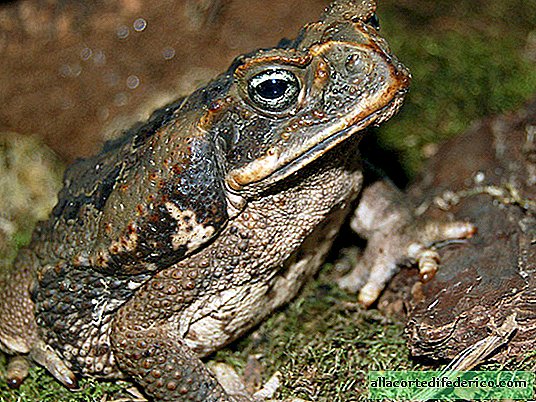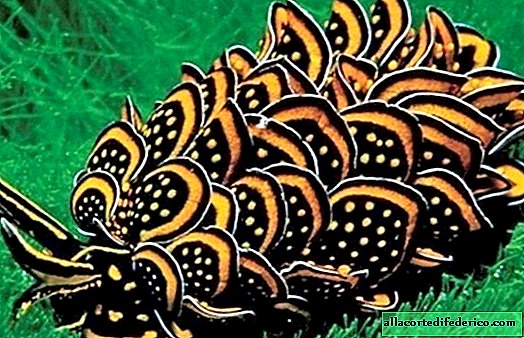Deadly toad aga: why Australian dogs adore her
Initially, toad aga, whose poison is deadly, lived only on the territory of the American continent. But the Europeans who settled in Australia, as you know, are great lovers of someone to hook into the wild nature of the continent in order to improve it. Since feral camels, millions of rabbits and cats of Australians were not impressed, they decided to bring here poisonous large toads.

The goal of the next introduction was quite noble: to rid the sugar cane plantations of the pest that plagued the farmers. The omnivorous reed toad or toad aga (Latin Rhinella marina), which lives in the vastness of Central and South America, was chosen to play the role of savior of the fields. This is a large amphibian, reaching 17-24 centimeters and a mass of more than 1 kilogram. The poison of these toads is extremely toxic, and the tribes of the Indians in the jungle of America traditionally use it for hunting, lubricating them with arrowheads.
Given the large size and omnivorous nature of the toads, it was decided to release them on the sweet potato plant and sugarcane, so that they would help farmers withstand pest attacks. These toads were introduced in the Hawaiian Islands, in the island states of the Caribbean, the Philippines, the Ryukyu and Ogasawara Islands, owned by Japan.

In 1935, about 3,000 toads were released in the fields in Queensled, northeast Australia. But, as is often the case in Australia, the introduction process did not go as planned. The fact is that the toads found other victims for themselves in Australia and, quickly leaving the reed fields, went to conquer the expanses of the continent. Since then, fresh news has regularly been received on the progress of reed toads to the south and west of the mainland.

Not having a large number of natural enemies, poisonous toads-ages feel very comfortable in Australia. Each year, the border of their habitat shifts by 20–25 kilometers, and their gluttony poses a serious danger to both species-victims and local species with which these amphibians compete for food resources. In America, there are many species of animals that are either immune to the poison of these toads, or eat the least toxic parts of the body, thus limiting the number of amphibians. Well, in Australia there is so far only one bird - the Australian raven, which preys on toads.

The only ones who are happy about the swift onslaught of poisonous toads in Australia are dogs. Pets, having discovered a cane toad during a walk, begin to lick it, after which they fall into a state of euphoria and fun, somewhat reminiscent of alcoholic intoxication in people. This effect causes a small amount of toad venom, which is located on the surface of the body, and dogs, wanting to get a portion of a laughing "cocktail", do not miss the chance to lick cane toads.

















